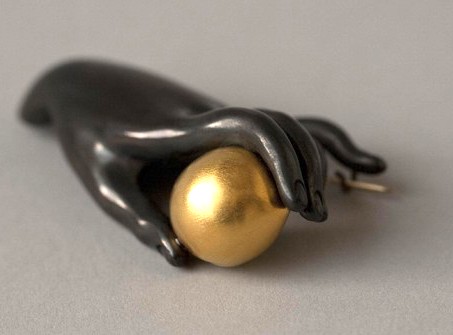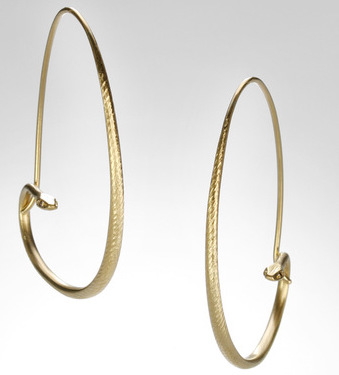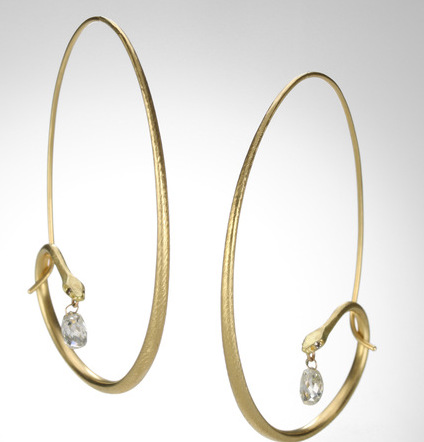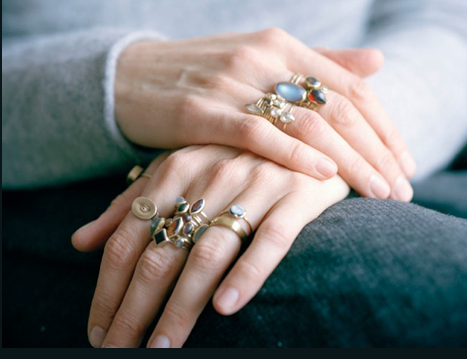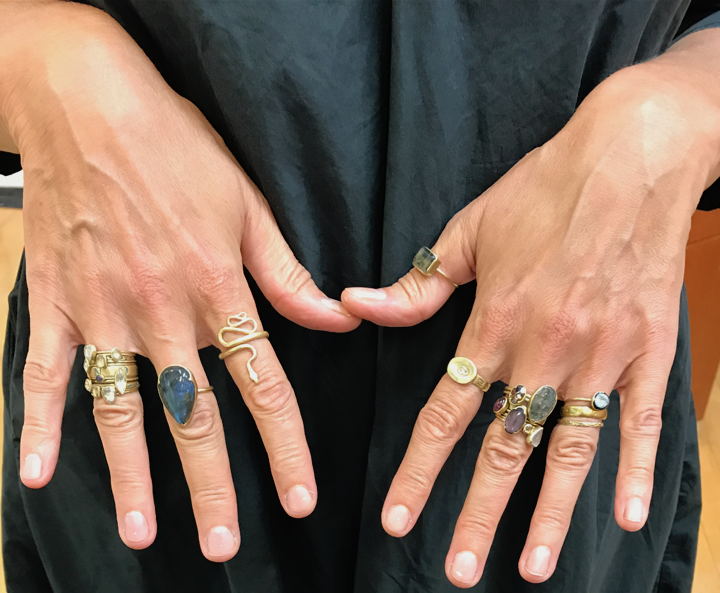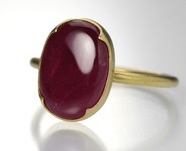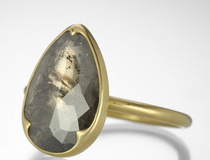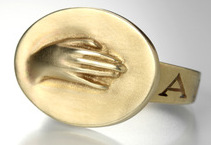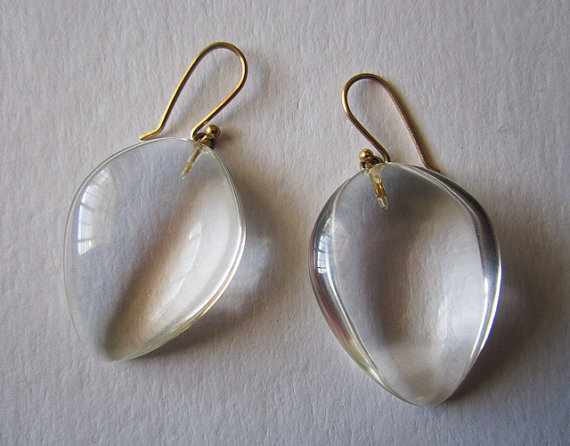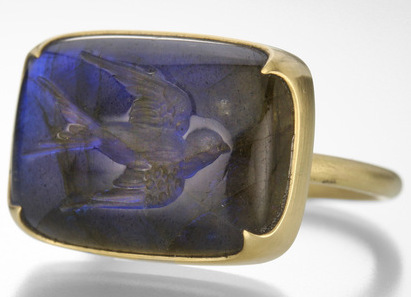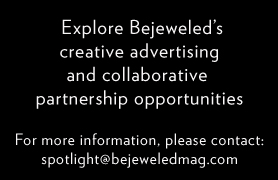Two Jewelers At The Forefront of Artisan Jewelry And Still Going Strong Today
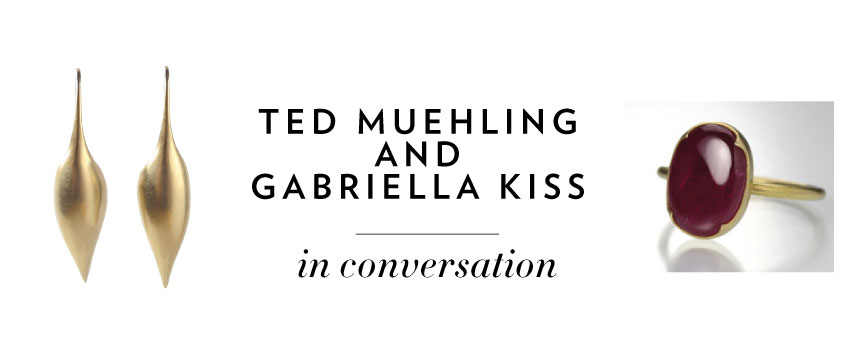
- The first pair of earrings I ever bought myself was back in the 80’s when I began working as an assistant fashion editor for a now-defunct women’s magazine. They were Ted Muehling and they were my first self-purchase jewelry item. I loved the streamlined style, his knack for translating naturalistic forms into completely wearable jewels, and the fact they had a fine, yet delicately sculptural quality during a time when most jewelry was over-the-top. Luckily the next pair of earrings I purchased are still being produced today in different gemstones and metals and I have added to my collection over the years.
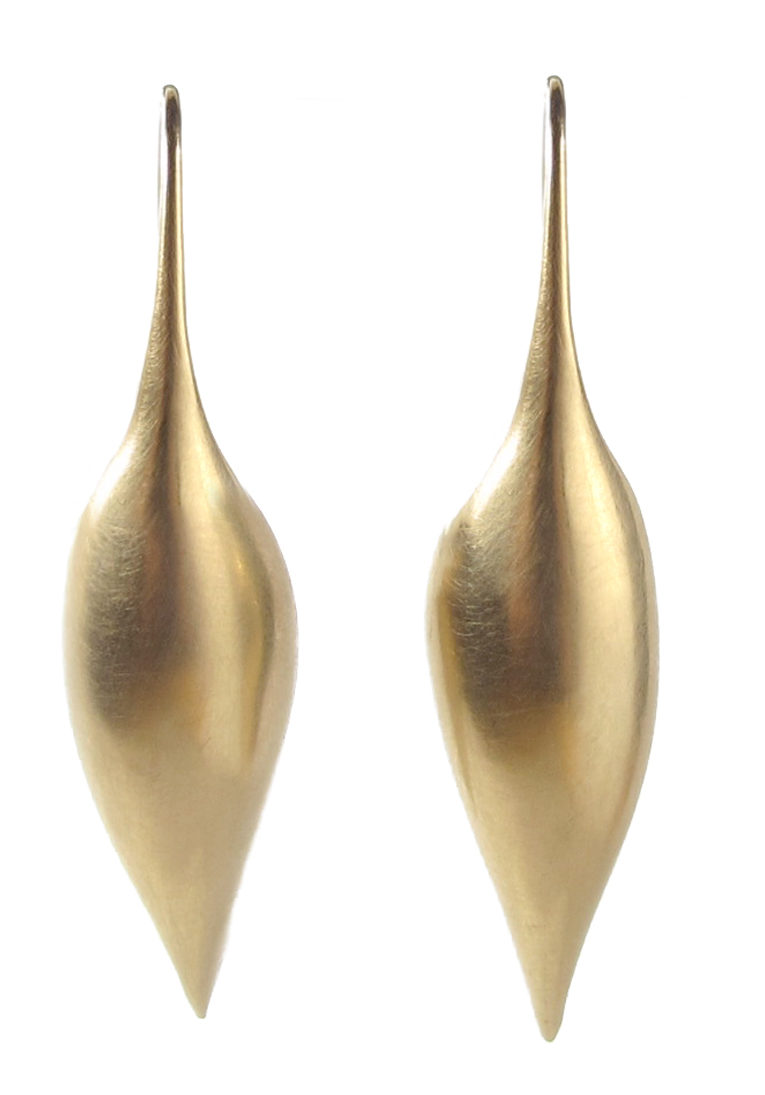
Ted Muehling Pod Earrings similar to my first pair
A few years later I was introduced to Gabriella Kiss’s jewelry and became an immediate fan, and have continued to be one ever since.
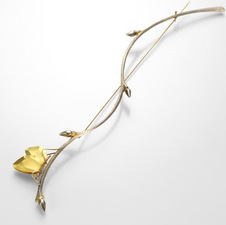
Gabriella Kiss Pin
So, when I heard they would be speaking together as part of Pratt’s School of Continuing Education Center Lecture Series, I immediately responded, yes, I would be there. Not only did I own their jewelry, from the 80’s through today, but they were part of a community that broke the rules, and blurred the lines of what precious meant, helping to develop the niche that would grow into artisan and designer jewelry.
I had covered them in magazine separately on numerous occasions throughout the years but had never seen them together, which was a treat for anyone attending and for fans and collectors of both designers. I wear Ted’s berry earrings often and Gabriella’s tear ring with the Latin saying which translates into “nothing without suffering” almost everyday mixed in with my antique rings.
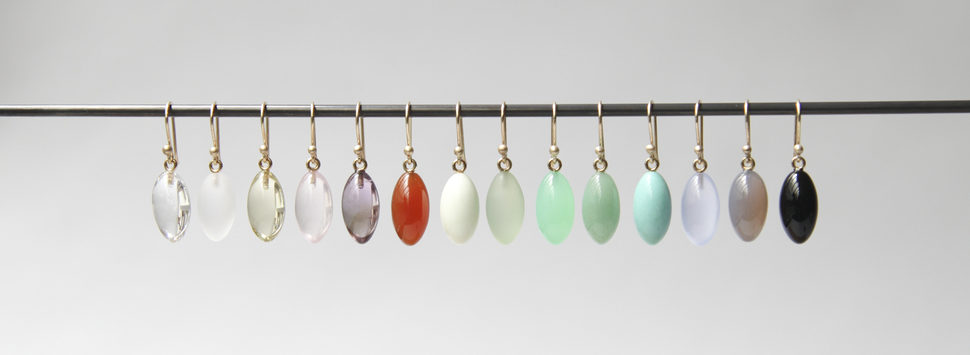
Ted Muehling’s Berry Earrings
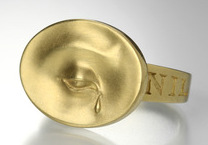
Gabriella Kiss’ Tear Ring with the Latin Inscription translating to “Nothing Without Suffering”
Both designers attended Pratt before there was a jewelry department. Gabriella was a sculpture major, and Ted, Industrial Design. But when each graduated, they began working in the field of jewelry. Nature informs both of their work, although they each have carved out their distinctive way of honing their skills and signature techniques and styles.
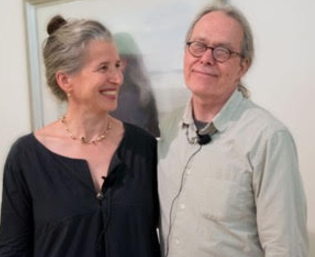
Gabriella and Ted The Night of the Event. Gabriella wears Ted’s Earrings and Ted wears Gabriella’s Necklace-they had given each other as gifts
Gabriella credits Ted as her mentor and explains, “my best education came from the eight years after college when I worked as an assistant to Ted. He not only taught me about design, he taught me about sales and everything else I needed to know including what true friendship means.”
She goes on to tell the story of how they met, ‘It was 1980; I had just graduated and needed to find a job. I knew that Ted had won a Coty Award in 1977 (A prestigious award to celebrate fashion from 1942-1985). I thought he was so successful, so when I dialed his number, I assumed I was calling a penthouse in Manhattan and one of his assistants would answer the phone.” She continues, “but it was Ted who picked up and told me to come over. I found out he actually lived one block away on the same street in Brooklyn. I walked into his apartment and there was this incredible turquoise patina bathtub. There were also peanut shells all over the floor and mice running around, but there were these amazing acrylic wing shapes hanging on a fishing wire that made the dark hellhole of an apartment really magical.”
Ted interjects. “It’s true and Gabriella always had a nicer apartment than me.” He smiles. “I was working on the Issey Miyake runway show and the pieces had to be ready in two weeks so I hired Gabriella on the spot.”
Gabriella adds, “We not only worked together but began forming our friendship and went to museums and even watched soap operas together.”
When Gabriella struck out on her own, Ted was her biggest champion and helped her get into stores. Her scaled-down pieces were at the same time, poetic, lyrical, sculptural and drew from the natural world as well as historical references.
Her first work appeared in Robert Lee Morris’ shop Artwear, which he opened to showcase talented designers of the time period. “Robert helped bring to the forefront a group of designers who were bridging the gap and experimenting with more streamlined, sculptural jewelry at the time. Elsa Peretti was doing a similar type of design for Tiffany & Co. And it caught on.”
The initial designs Gabriella worked on were supposed to be a gift for Ted. They were angels like those the two saw in the churches they were visiting in Italy, but Gabriella could not work them into the larger pieces she wanted to make and instead turned the three-dimensional pieces into earrings, pendants and brooches.
Inspired by the expressiveness of hands and their symbolism in real life, in earlier jewelry and art history, Gabriella went on to design a collection of hand carvings in pins, earrings and rings.
- Gabriella Kiss Hand Earrings
- Gabriella Kiss Hand brooch
Since then, her most well-known collections, which continue to evolve, include naturalistic motifs revolving around insects, birds, walnuts and snakes. When combined, her maternal grandmother’s and her paternal grandfather’s names mean small and nuts. “Therefore I am making little nuts,” she jokes, but becomes more serious when she talks about her grandmother who wore a walnut on a chain around her neck. “My walnut series was carved in her memory,” she explains.
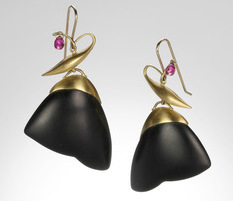
Gabriella Kiss Fly Earrings
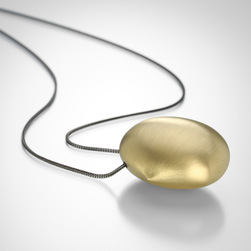
Gabriella Kiss Walnut Pendant
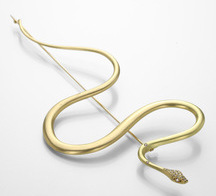
Gabriella Kiss Snake Brooch
With her snake collection of brooches and earrings, she says, “I try to capture the slithering and coiling movement of the serpent in the static piece of jewelry.”
- Small and Large Gabriella Kiss snake earrings
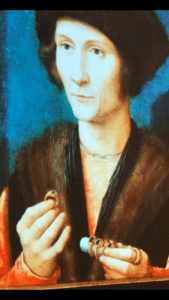
A portrait from the 1500s that lent inspiration for Gabriella’s settings for her gemstone and diamond rings
When Gabriella works with gemstones, she keeps the settings simple. For example, the design of her scalloped, edged bezel-set cabochon rings. A series of her gemstone rings are influenced by 16th century Flemish paintings, which portray settings that allow the beautifully colored gemstones to be highlighted.
- Gabriella Kiss’ stack of rings
- Gabriella Kiss wearing her rings the night of the event
- Gabriella Kiss’ Ruby Ring
- Gabriella Kiss’ Lacey Diamond Ring
The ‘Love Token’ series was inspired by the 19th-century tradition of receiving a gift of a painted eye from a lover. Gabriella expanded on this influence with bas-relief carvings of the five senses with different Latin inscriptions on each of the shanks.
- Two out of the five rings in the “Love Token” series of rings
Speaking of eyes, she also worked on a project for Isabel Toledo’s runway show and created hair ornaments that were ‘eyes in the back of the head’.
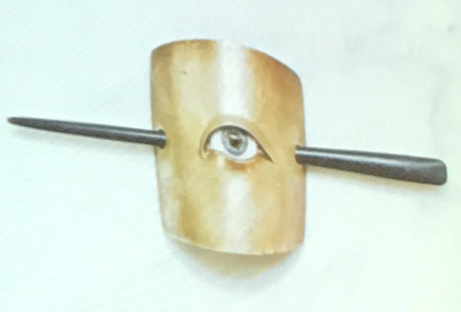
The “Eyes In The Back of The Head” hair ornament that Gabriella Kiss created for Isabel Toledo’s runway show
The mother of two sons, Gabriella explains that she came from a family who didn’t have much jewelry to pass down and perhaps that is why her love for jewelry is so strong. “I had to create my own heirlooms,” and then she quips, “I really hope I like my sons’ wives.”
When it’s Ted’s chance to talk, he is more mild-mannered, yet has an equally good sense of humor, albeit a bit more dry that Gabriella’s. In talking about his foray into to jewelry from his major in Industrial Design and his first pieces, Ted tells a story about one of his mentors. He was a professor at Pratt and he said, “You are just as talented as anyone who has ever walked through these doors but you will never be successful because you have no charm.”
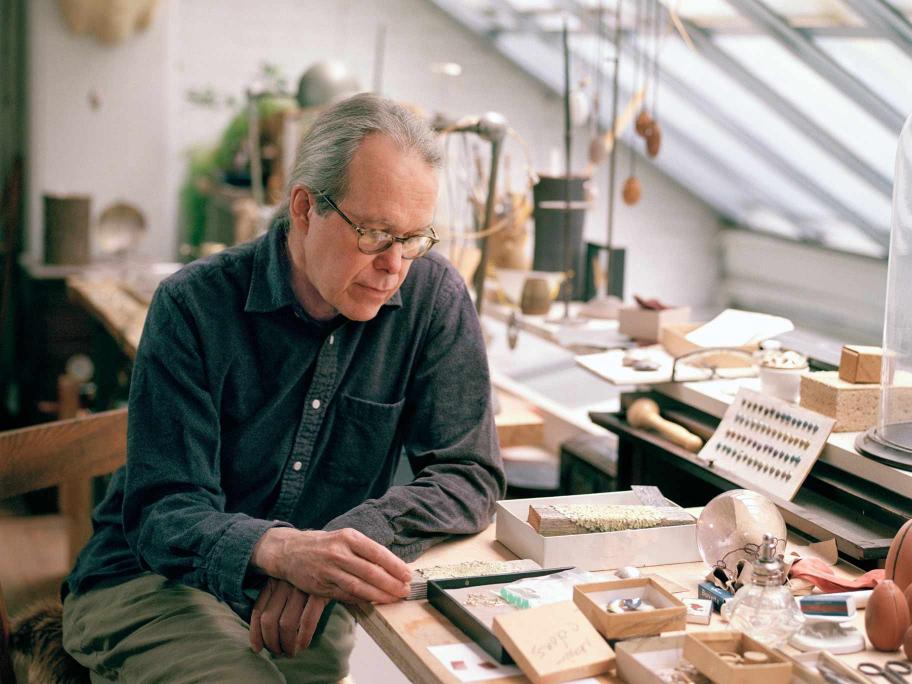
Ted Muehling working in his studio
The entire audience laughs and the straightforwardness and the good-natured way in which Ted relates the story proves to be his charm.
In contrast to Gabriella’s vivacious personality, Ted has a quieter demeanor and explains, “I really love making things and I am comfortable in that role, behind the scenes.” Yet, whenever he slips in some of his acerbic wit, he continues to get smiles and laughs from the audience who has come to hear a master jeweler and artisan speak.
Ted’s first designs were created by learning how to bang and solder metal. “I made these stick-like objects in silver that fanned out at the top and really didn’t know what they were at the time, but friends began to wear them in their hair when they went out to the discos in the late 70’s.”
From this Ted went on to create forms that were influenced but never too specific in their references to the natural world.
“It is so important for me to work directly with the materials and metal and to learn how to shape them into what you want them to become but there is also something so magical about the surprises that can happen when you are working this way.”
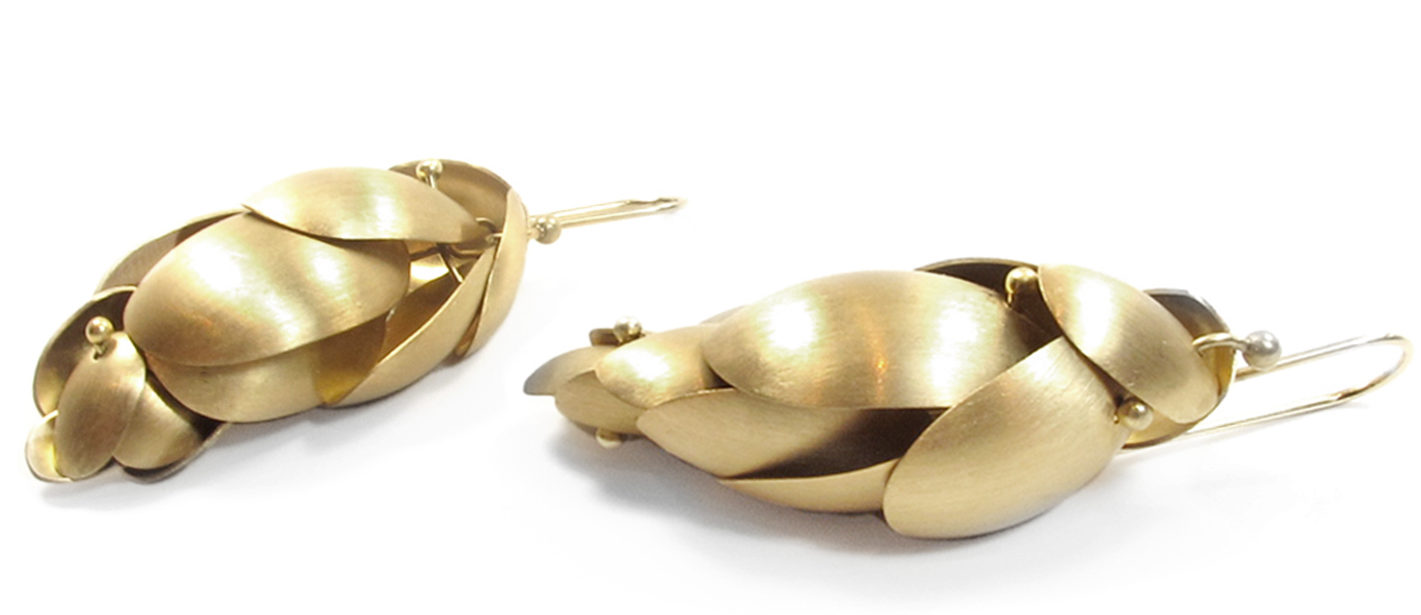
Ted Muehling double acorn earrings
From silver pods to feather inspired designs and ginkgo leaves, Ted’s pieces are organic yet pared down and sculptural. “It’s very important to me that everything flows and is fluid. I am a stickler for making my connections and closures an integral part of the design, so nothing seems forced or out of place,” he explains.
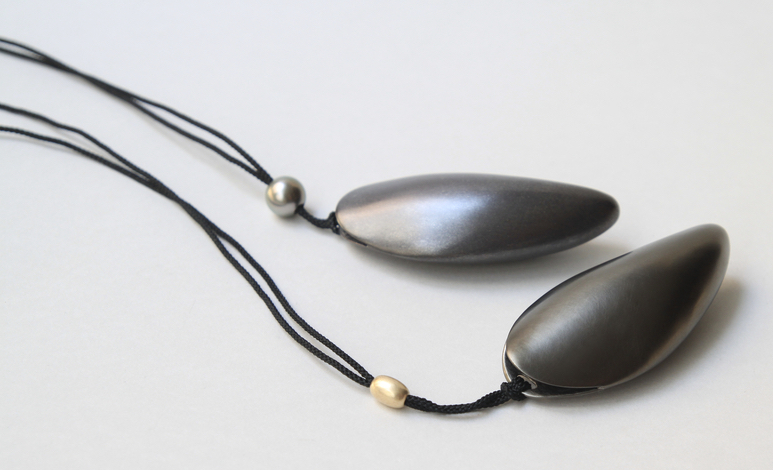
Ted Muehling Oyster Pendants
One of Ted’s most creative collections was the acrylic pieces with a painterly quality in their use of color. These were the pieces he first designed for the Issey Miyake show and then introduced in his collection. “I loved using a material that had no intrinsic value and making it into something extraordinary,” he says.
Soon after Ted started designing, things began to happen quickly. He went to Bendel’s, which used to have an open call day for emerging designs. “There was always a line of designers waiting to see the buyer and when she saw my designs, she bought a bunch of them.” Then Vogue began styling with his pieces; he received the Coty Award, which was major back then, and after that many stores began to call and he began his long-term working relationship with Bergdorf’s.

“During the first years of designing I felt extreme pressure to keep coming out with new pieces and new collections, “ Ted explains. “But the same pieces kept selling and I found I didn’t need to create seasonal collections the way some of the other designers did. I would evolve into different materials and stones and/or metal finishes and that was enough for the stores to continue to sell. For example, my rice, acorn and berry earrings are bred and butter—consistent sellers for me over many years. I do love to design and bring out new ideas and concepts but I have learned that I can show it when I feel that the pieces are perfected and ready.”
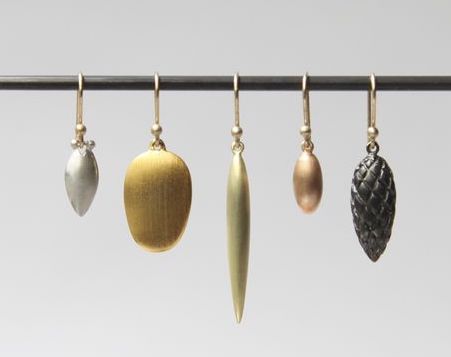
Earrings Ted Muehling has been designing and consistently selling since the 1980’s
He opened his own store in 1990, and then in 1999, began collaborating with various glass and porcelain companies. He continues to sell his designers and objects in his Manhattan’s White Street location along with other designers such as Gabriella Kiss.
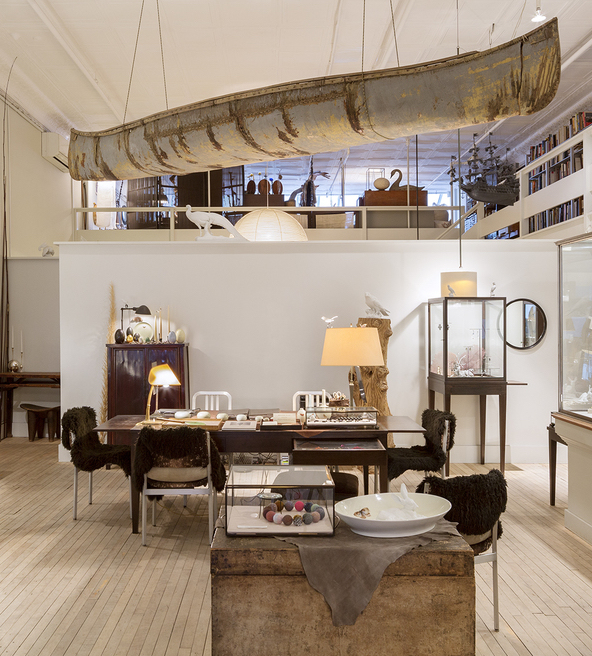
Inside Ted Muehling’s store
Talking about his long-term working relationship and friendship with Gabriella, he says, “Not only was she wonderful to work with, a major talent, and knows jewelry better that I do, but she has been a friend and a muse. I designed my first Olive Branch bracelet for Gabriella, which was more delicate than those I design today.”
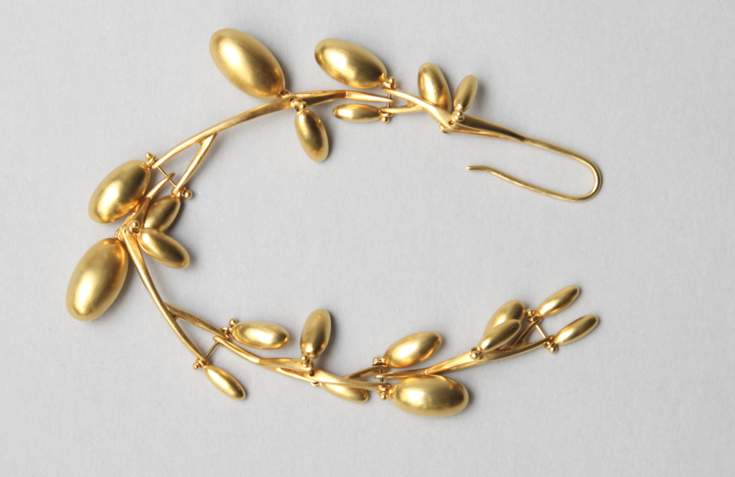
Ted Muehling’s Olive Branch Bracelet
They both wore each other’s jewelry. Ted wore a necklace designed by Gabriella, and along with her own pieces, she wore earrings designed by Ted.
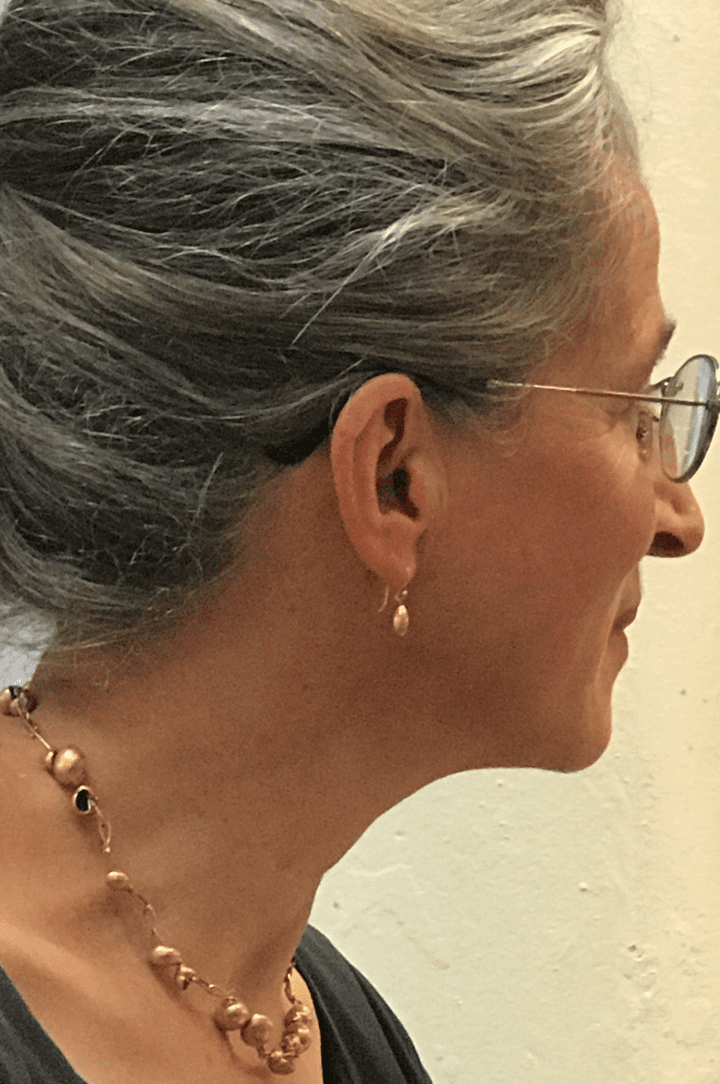
Gabriella Kiss wearing Ted Muehling Earrings the night of the event
They both have a similar take on how they see their customers wearing jewelry. Ted says, “I’m all for jewelry that is sensual and is a compliment – jewelry that doesn’t want to walk into the room for you. He continues, “How does Gabriella say it? Jewelry should be a punctuation!”
Each with their own definitive style and sensibility, they continue to design and create jewelry that adds beauty, meaning, and symbolism. Gabriella has been quoted before as saying, “I try to make pieces that have a narrative or a context that can carry humor, sentiment, or a commentary on the human condition.”
In the digital age where everything changes rapidly, and with one click you could be on another jewelers’ website, it’s comforting to know that these two design icons have captured the hearts, minds, and attention of generations of women and create everything you want a piece of jewelry to be.
- Ted Muehling Earrings
- Gabriella Kiss Swallow intaglio ring


